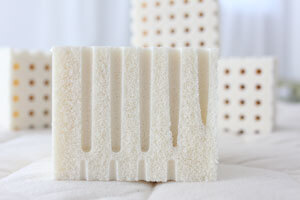Every purchase made online is encrypted with a high level of security you’ve come to expect. Your private information is never shared nor sold, so you can buy with confidence. You can also visit our store if you are in the St. Louis area.

Estimated reading time: 3 minutes
Table of Contents
Customer Question: Do We Used Botanical Latex In Our Organic Mattresses
and our all-natural latex mattresses? This question was a good one, and it threw me for a loop. So I searched Google for the words “Botanical Latex” and sure enough I confirmed my belief. Someone had convinced this unsuspecting customer that 100 percent all-natural latex was something different from 100% botanical latex. This question was posed to me in many different ways and most recently yesterday in a price comparison so we have decided to blog the answer. I believe the term botanical latex muddies the waters and creates misleading information. Today we set the record straight:
· No windy sales pitch about latex rubber
· No which is best Talalay or Dunlop question
· No is it 100 percent natural
· No talking about how it is made
Related Links
What is Botanical Latex?
Truth is savvy researchers, I only wish the answer were simple. I will start by defining the word “botany” the study of all types of plants in general and is the word from which botanical is derived. Botany is sometimes confused with Dendrology, which is the study of only wooded plants. Dendrology may be considered a subcategory of botany, which specializes in wooded plants. So for today’s blog and argument’s sake, we will be assuming that a rubber tree is botanical. The milky sap is derived from a “rubber tree” or “botanical tree” and is turned into the latex rubber we buy in the form of mattresses, toppers, pillows, etc.
To make these products the industry uses a couple of different manufacturing methods to convert the sap into a solid form like a mattress. One of these methods for producing latex rubber is the Talalay processing technique. The other is processed in the Dunlop method of production a.k.a. the original method of producing latex rubber. Manufacturers call these finished products by many different names, which isn’t important. These many different types of finished products are often defined the following way; natural rubber, latex rubber, 100 % all natural, synthetic latex, or blended latex. The fact is it doesn’t matter what kind it is, if it contains any amount of the milky white tree sap even a drop then it can arguably be called “botanical latex”.
Customers Need to Protect Themselves from Industries with No Descriptive Standards for Latex
It’s easy, consumers will want to know how much of the botanical latex rubber is contained in the product they are about to buy. The more botanical natural rubber the higher the cost will be of the end product, the less rubber the more economical the cost will be to the consumer.
How do consumers know how much rubber is in a mattress?
• Weight can be one indicator That rubber is heavy
• Ask for a specification breakdown of the bed telling what each layer is made of thickness etc.
• Cost of a good finished 6” all-rubber mattress or thicker cannot be purchased for $500 or even $1000.00. Shop competing models with equivalent specifications. If what you are looking at is significantly cheaper they had to cut costs somewhere. Get the scoop from their competitors; they are often glad to share the reasoning for price differences.
• Do your homework and don’t just listen to a sales pitch. Mattress Forums, mattress manufacturers, and former customer’s reviews can be good sources of information.
• If the bed containing botanical latex is using organic materials like certified organic wool and cotton you can expect the cost to be higher.
Contact STL Beds Now
You can also contact us by filling out the form below. Make sure to fill in as many fields as possible so we can respond to you with the most accurate information!
